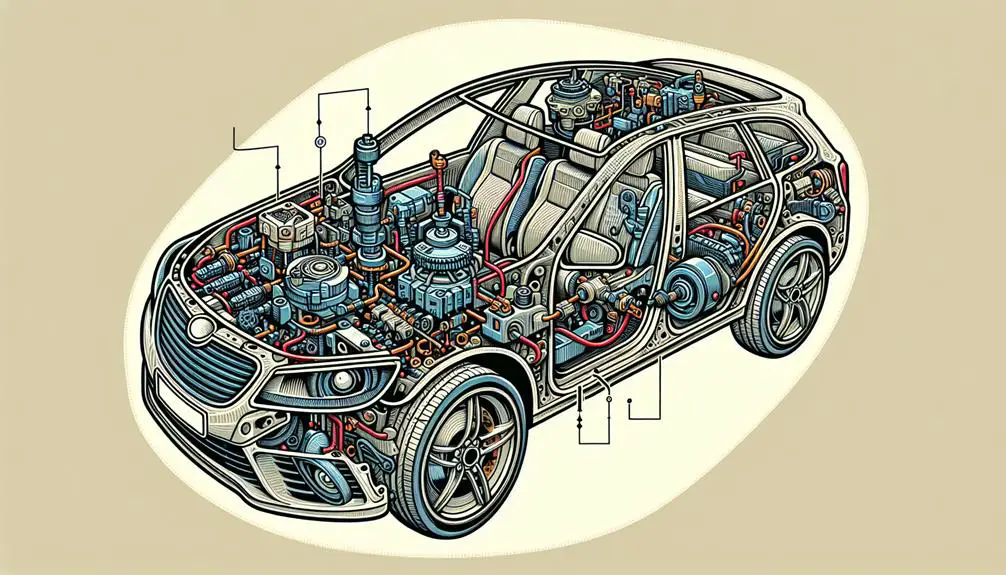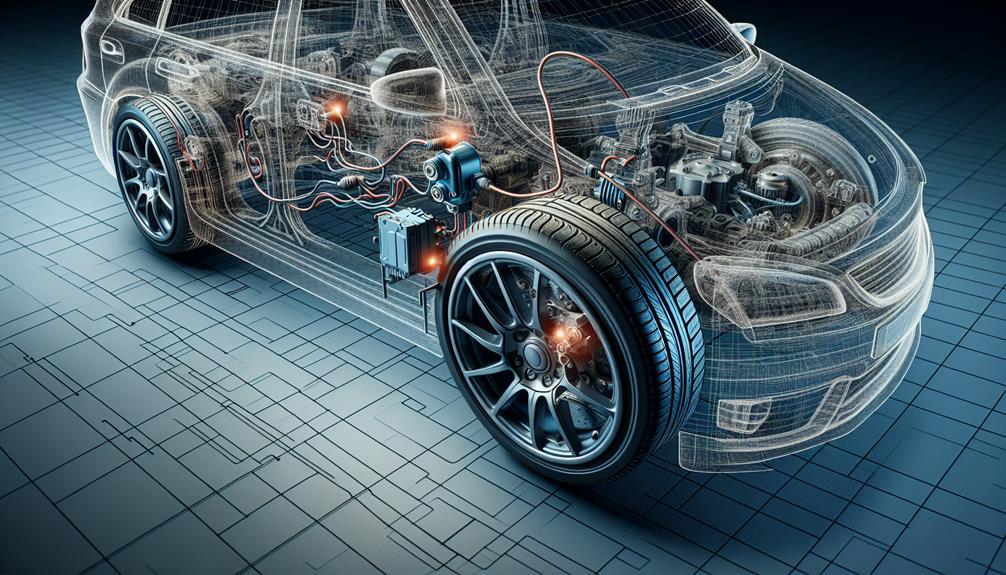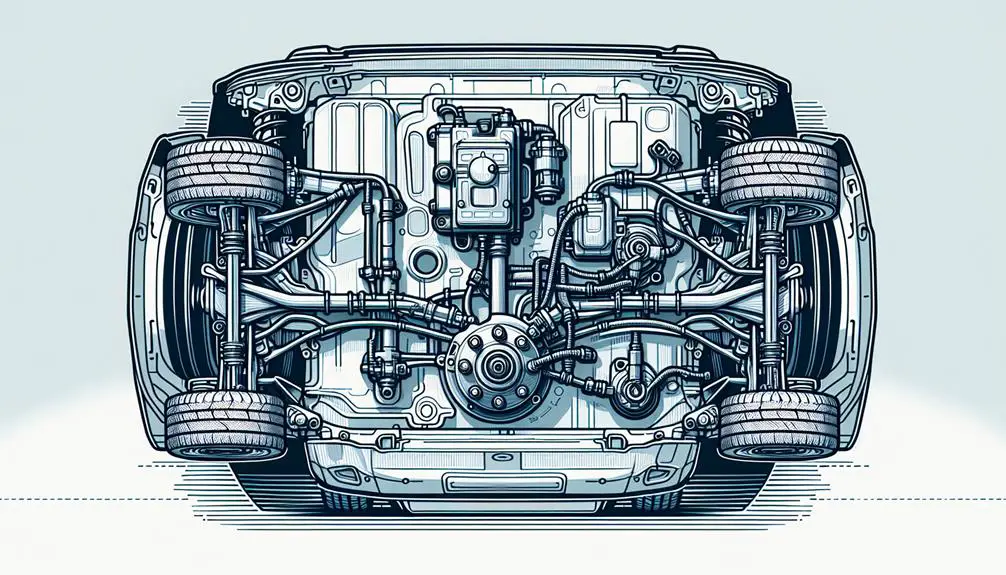- The Anti Lock Braking System (ABS) components are located in the engine compartment. Wheel speed sensors are at each wheel.
- The ABS control module is often found in the engine compartment or under the vehicle.
- The hydraulic control unit is typically located close to the master cylinder or within the engine compartment.
Understanding the ABS System

The Anti-lock Braking System (ABS) is important for vehicle safety. It stops wheels from locking up when you brake hard, helping you keep control, especially on slippery roads.
Here's how it works: ABS checks the speed of each wheel with sensors. If a wheel is about to lock up during braking, the system reduces brake force to that wheel. This keeps the wheel turning slowly, so you can steer better in emergencies.
ABS doesn't shorten stopping distances. Its main goal is to improve control during sudden stops.
When ABS is working, you'll feel the brake pedal pulse. This is normal. Keep pressing the pedal steadily.
Knowing how ABS works and what happens when it activates helps you handle emergency stops better. ABS is designed to prevent accidents by helping you maintain control of your vehicle.
The Engine Compartment
In your car's engine area, you'll find important parts of the Anti-lock Braking System (ABS), which is key for safe driving.
The ABS control module, which is in charge of managing brake pressure to stop the wheels from locking during a quick stop, is located in the engine compartment. You can usually find it on the firewall or close to the master cylinder, recognized by several brake lines attached to it.
Next to the module, there's the ABS pump. This pump works with the module to adjust brake pressure when it senses a wheel might lock, helping you maintain control during a skid.
Also, in the engine compartment is the ABS fuse and relay, found in the fuse box. These parts protect the ABS's electrical system and are important to check if the ABS warning light turns on.
Knowing where these ABS parts are helps you keep your car's safety features in good condition and aids in discussing any issues with your mechanic. Remember, the ABS is an important part of your car's overall safety system.
Wheel Speed Sensors

Exploring the engine parts of the ABS, let's look at wheel speed sensors. These sensors are important for checking how fast each wheel spins. They help the car's anti-lock braking system (ABS) work right by sending wheel speed information to the ABS control module. This helps prevent the wheels from locking up when braking, especially on slippery roads.
Wheel speed sensors are usually found on the hub of each wheel, near the brake rotors. They track the speed of the wheels and send this information to the ABS control module. If a wheel starts to spin much slower than the others, showing it might lock up, the ABS can adjust by lowering the brake pressure to that wheel, helping it to regain grip.
When thinking about wheel speed sensors, remember:
- Accuracy is important: The ABS works well when wheel speed sensors are precise. Even small errors in speed data can change how the system reacts.
- Maintenance matters: Keeping these sensors clean and undamaged is important. Regular checks help avoid ABS problems.
- Location is key: Since these sensors are at each wheel, they can give specific, real-time speed data, which is crucial for the ABS to respond correctly.
ABS Control Module
The ABS control module is the main part of the anti-lock braking system. It reads wheel speed data to stop the wheels from locking up when braking. This module, often found in the engine area, works with wheel speed sensors. It checks if wheels are about to lock up and adjusts brake pressure to help you control the car.
The ABS control module always watches the wheel speed to act fast if it sees a problem. This helps make the ABS system work well, keeping the car safe, especially when braking hard or on slippery roads.
It's important to keep the ABS control module working well. If it breaks, the ABS mightn't work, making it harder to stop the car quickly without skidding. Regular checks can make sure it's working right, helping to keep the car safe.
Hydraulic Control Unit

The Hydraulic Control Unit is a key part that works with the ABS control module to manage brake fluid pressure and stop the wheels from locking up. This is crucial for preventing skidding during heavy braking or on slippery roads. The unit, which includes valves, pumps, and sensors, is found near the engine bay or under the chassis and connects to the master cylinder and brake lines.
Here's why the Hydraulic Control Unit is essential:
- Safety: It prevents wheel lock-up, reducing the chance of accidents.
- Vehicle Stability: It keeps the vehicle stable and controllable during sudden stops.
- Brake System Health: It adjusts brake pressure to lessen wear on brake components.
Knowing about the Hydraulic Control Unit helps you understand your vehicle's safety mechanisms better.
Conclusion
The ABS system isn't located in just one spot in your car. It starts in the engine area and includes sensors on each wheel to check how fast they're moving.
The main parts, the ABS control module and the hydraulic control unit, work together to make your brakes work smarter. So, when you press the brakes and stop smoothly and safely, it's because of this system working all over your car.